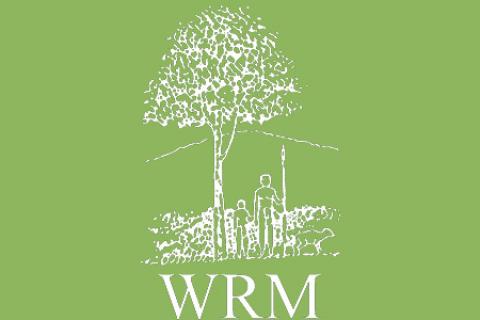In December 1999, Provincial Law No. 3,631 was sanctioned in Argentina, creating the Overall Conservation and Sustainable Development Area, known as the “Green Corridor of the Province of Misiones.” It involves 22 municipalities and covers an area of 1.108,000 hectares of Parana forest, located in the province of Misiones, spanning a mosaic of landscapes including protected areas, private property put to various uses, agricultural settlements, indigenous communities and varied socio-economic situations and even areas having land use and land tenure conflicts.
Bulletin articles
Since 1999, the WRM has been reporting profusely (WRM Bulletins 20, 21, 24, 28 and 50) on the dangerous situation of the last significant remaining primary dry tropical forest in the world, the Chiquitano forest, located in Bolivian territory.
This valuable ecosystem will be altered by the gas pipeline that the transnational companies Enron and Shell plan to build between the cities of San Miguel and Cuiabá (Bolivia and Brazil respectively), crossing the region with the well-know environmental impacts caused by this type of “development” project.
An independent scientific investigation carried out by a research team of U.S. and Brazilian scientists led by William Laurance of the Smithsonian Tropical Research Institute, has provided compelling evidence that rates of forest destruction in the Brazilian Amazon have accelerated sharply since 1995, returning to the catastrophic levels of the 1970s and 1980s. The research opposes the claims of the Brazilian government that threats to Amazonian forests have fallen in recent years because of improved environmental laws and public attitudes.
The Chilean forestry model, based on the promotion of large-scale monocultures of pine trees and eucalyptus for export, has been implemented at the expense of the environment and of the local peoples. In spite of this fact, both the State and the forestry companies continue to hide the truth and insist that they are “planting forests” and contributing to the country’s development.
Residents of the Waratah-Wynyard Municipality, a tree plantation-devastated community and environment in Tasmania, have issued a Joint Submission to the national authorities, the media, interested bodies and concerned people on January 13, 2002 (the full document is available at http://www.wrm.org.uy/countries/Australia/joint.html )
Ninety seven percent of the land area of Papua New Guinea still is customary land owned by the people, who voluntarily give 3% to the government to build schools and other public buildings. This lush land with more than 700 recognised culturally and physically distinct peoples, each with their own language and traditional culture, used to have traditional landowners exercising sustainable forest management with little interference from outside.
For years forest activists have focused their attention --and rightly so-- on the World Bank's role in forest destruction. Those efforts have to a certain extent been instrumental in the introduction of a number of positive policy changes within the Bank, which have at least meant an improvement in World Bank lending.
The dense, moist forests of the Central African Republic cover about four million hectares. Although the country has maintained loan arrangements with the IMF dating back to the 1980’s, it came under increased pressure when the Central African Republic signed a three-year, $66 million loan agreement with the IMF in 1998. The IMF has encouraged the Central African Republic to increase exploitation of forest and mineral resources.
For over a decade, the Ivory Coast has been under the influence of IMF structural adjustment programs, of which intensification of exports has been a significant factor. The 1990s saw the heightened pursuit of fiscal and structural reform in the Ivory Coast. The Ivory Coast devalued their currency in 1994 and eliminated export taxes in compliance with the IMF’s adjustment program and in 1995 the country liberalised its domestic markets.
Beginning in 1983, Ghana has been implementing IMF structural adjustment programs focused on export-led growth, which has included measures to devalue the currency and remove various barriers to trade. While this has resulted in significant economic gains, it has also meant severe detrimental consequences for the rainforests and forest-dwelling people of this western African nation. Ghana’s most recent three-year, $239 million loan from the IMF was initiated in 1999, and modified in 2000.
Called the “naturalist’s promised land” by French explorer Phillippe de Commerson in 1771, Madagascar is one of the most ecologically rich countries in the world. Twelve thousand species are found on the island the size of Texas; 80 percent are endemic, existing nowhere else. Nine new species of lemur were recently discovered in Madagascar, placing the country only behind Brazil in the number of primates that call it home.
A project is in progress to build a number of roads in Kachin State in return for huge logging concessions. While improving and expanding the infrastructure in Kachin State is much needed, the impact of this deal on the environment could prove to be disastrous.
